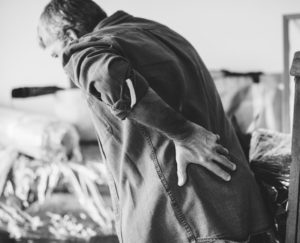Workplace Injury – Can I sue my workplace for an injury?
Workplace Injury – Can I sue my workplace for an injury?
If you are injured on the job, the law does not permit you to sue your employer. Instead, you must make a claim with WorkSafeBC. The good news here is that you do not need to be concerned about your employer’s financial ability to pay you for lost wages and/or permanent lost earning capacity. The bad news is that WorkSafeBC can be a nightmare to deal with. You do not ever get your day in court.
A workplace injury is any injury that occurs within your scope of employment. What this means is that your injury, in order to be covered by WorkSafeBC, does not have to occur at a specific worksite. If, for instance, you are driving and doing so as part of your employment, then you are covered. As example might be your employer asking you to leave your worksite to go on an errand. If you are running the errand as part of your employment and suffer an injury, you are covered by WorkSafeBC.
Serious Workplace Injuries
From 2010 -2019, there were over 63,000 serious workplace injuries reported in BC. (read more).
According to WorkSafe BC, workers in B.C. …”missed 3.2 million days of work due to work-related incidents and disease…”(Worksafe BC). The most common types of injury claims accepted by us were:
- Strains and other than back strains
- Back strains
- Cuts
- Contusions
- Fractures
If you have been injured on the job, it is important to report the injury as soon as possible to Worksafe BC. It is also a good idea to contact personal injury lawyer Tim Louis to get the best legal advice regarding workplace injury to assist you in ensuring you get the compensation you deserve.
Reporting a Workplace Injury
Reporting a workplace injury is very easy. It can all be done over the phone (WorkSafeBC Teleclaim 1-888-967-5377).
In order for you to be eligible for WorkSafe benefits, your injury does not need to occur at a specific time. A perfect example of this is carpal tunnel syndrome from typing. A worker who develops this syndrome will do so as a result of typing over a number of weeks if not years. Another example is lung cancer caused by exposure to asbestos. The “injury” would take place over many decades.
As soon as you suffer a workplace injury, you should immediately report it, not only to WorkSafeBC, but also to your employer and your family doctor. Failure to do so may seriously weaken your claim. Your doctor will be asked by WorkSafeBC to confirm your injury. If it is a very serious injury and you are taken to a hospital by ambulance, do not leave it to the ambulance crew or the hospital to report your injury to WorkSafeBC.
Most WorkSafeBC are relatively straight forward. However, sometimes, this is not the case. If you feel that you are not being treated fairly by WorkSafeBC, you should immediately hire a workplace injury lawyer familiar with WorkSafe claims.
Repealing Workplace Injury Decisions
Appealing Worksafe decisions to court is very difficult and rarely successful. In 2016 an injured worker, Anna Currie was successful. The chambers judge overturned Worksafe’s decision to refuse to provide retroactive vocational rehabilitation benefits to her. Sadly, Worksafe simply appealed the chambers judge decision to the BC Court of Appeal.
The BCCA reinstated the Worksafe decision to refuse to provide retroactive vocational rehabilitation benefits.
Workplace Safety
To keep everyone safe on the job, all employees should participate in workplace safety protocols. This group collaboration works to protect everyone, increase safety on the job, prevent workplace injury and helps with overall productivity.
In order to prevent workplace injury, it is important to:
- Always report unsafe work conditions
- Keep a clean workstation
- Ensure you always wear protective equipment such as hard hats and steel shank/toe boots
- Take breaks – workplace injury often occurs when people are tired
- Don’t skip any steps to get the job done faster – follow workflow procedure for safety
- Stay up to date with new safety protocols and procedures
- Use proper posture and follow safe working and lifting procedures
- Help the new employees – guide them on looking after their health, safety and the safety of the workplace
Injured on the Job?
If you have been injured on the job, contact Tim Louis today to get the best legal advice. As a seasoned personal injury and long-term disability lawyer, he will provide you with the best legal advice and help you navigate the complications of a WorkSafe BC claim. Give Tim Louis a call today at (604) 732-7678 for a no-fee telephone consultation, during which he will answer all your questions, no matter how complex.
Sources:
Provincial Overview by Worksafe BC. Free data visualization software. (n.d.). Retrieved January 16, 2022, from https://public.tableau.com/app/profile/worksafebc/viz/Provincialoverview/Didyouknow
Worksafe BC: Facts & figures. WorkSafeBC. (2021, March 12). Retrieved January 16, 2022, from https://www.worksafebc.com/en/about-us/shared-data/facts-and-figures



 Repetitive Strain Injuries (RSI) can result from a buildup of damage to muscles, tendons, and nerves from repetitive motion or strain on specific parts of the body. Repetitive Strain Injuries are quite common and may be caused by a variety of common work activities, including:
Repetitive Strain Injuries (RSI) can result from a buildup of damage to muscles, tendons, and nerves from repetitive motion or strain on specific parts of the body. Repetitive Strain Injuries are quite common and may be caused by a variety of common work activities, including:
 Overall health: Eat healthy and get regular exercise to keep your body as resilient as possible, and try to avoid smoking, as this reduces blood flow and oxygen in the body.
Overall health: Eat healthy and get regular exercise to keep your body as resilient as possible, and try to avoid smoking, as this reduces blood flow and oxygen in the body.




 According to BC law, drivers must have winter tires with a 3-peak mountain and snowflake symbol or M+S (Mud and Snow) symbol located on the tire sidewall. Failing to have proper tires between Oct 1st – March 31st can result in a $109 fine and can alter how much you’re considered at fault if you’re in an accident according to I.C.B.C.
According to BC law, drivers must have winter tires with a 3-peak mountain and snowflake symbol or M+S (Mud and Snow) symbol located on the tire sidewall. Failing to have proper tires between Oct 1st – March 31st can result in a $109 fine and can alter how much you’re considered at fault if you’re in an accident according to I.C.B.C.

 Any item or device that distracts a driver from paying full attention to the road including:
Any item or device that distracts a driver from paying full attention to the road including:

 A vehicle collision results in rapid deceleration, which triggers the front airbags. Nitrogen gas is produced, resulting in inflation at speeds of roughly 300Km/hour in order to protect your head and chest in a high-speed collision. Seatbelts are usually enough to protect the driver and front passenger in a low-speed collision – protecting the occupant’s chest and head. However, it is important to note that it is uncommon for front airbags to deploy in rear-end collisions, rollovers, or side-impact accidents. During these types of crashes, the side airbags deploy, providing protection between vehicle occupants and the doors.
A vehicle collision results in rapid deceleration, which triggers the front airbags. Nitrogen gas is produced, resulting in inflation at speeds of roughly 300Km/hour in order to protect your head and chest in a high-speed collision. Seatbelts are usually enough to protect the driver and front passenger in a low-speed collision – protecting the occupant’s chest and head. However, it is important to note that it is uncommon for front airbags to deploy in rear-end collisions, rollovers, or side-impact accidents. During these types of crashes, the side airbags deploy, providing protection between vehicle occupants and the doors. You can reduce the
You can reduce the 
 Brakes are an essential
Brakes are an essential 
 Windshield wipers can make a big difference in overall driver safety and visibility — removing dirt, rain, and snow – while running for hours at a time to keep your view of the road clear at all times.
Windshield wipers can make a big difference in overall driver safety and visibility — removing dirt, rain, and snow – while running for hours at a time to keep your view of the road clear at all times.

 You may be tempted to wear your casual wear before jumping on your motorcycle, but think about the
You may be tempted to wear your casual wear before jumping on your motorcycle, but think about the 
 Drivers must follow the posted speed limits on BC roads. However, with the warmer weather, drivers may become less cautious. Remember, just because the roads are clear of rain and ice does not mean roads are without
Drivers must follow the posted speed limits on BC roads. However, with the warmer weather, drivers may become less cautious. Remember, just because the roads are clear of rain and ice does not mean roads are without 
 Spring is the time of year when wild animals begin foraging for food and may need to cross a busy roadway. Keep an eye out for any animal crossing signs, scan highways and roads for wildlife and reduce your speed if necessary. It’s important to note that animals are active all day and if you are about to hit an animal while behind the wheel, try to strike wildlife on an angle to prevent the animal from passing through your windshield.
Spring is the time of year when wild animals begin foraging for food and may need to cross a busy roadway. Keep an eye out for any animal crossing signs, scan highways and roads for wildlife and reduce your speed if necessary. It’s important to note that animals are active all day and if you are about to hit an animal while behind the wheel, try to strike wildlife on an angle to prevent the animal from passing through your windshield.






